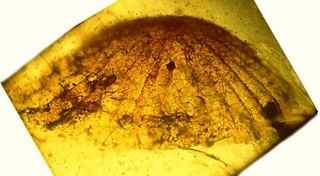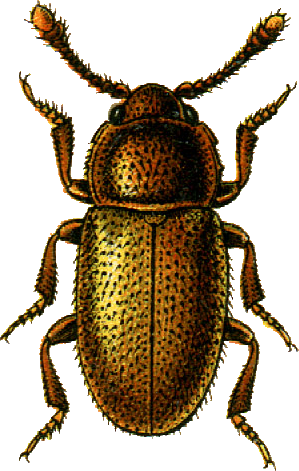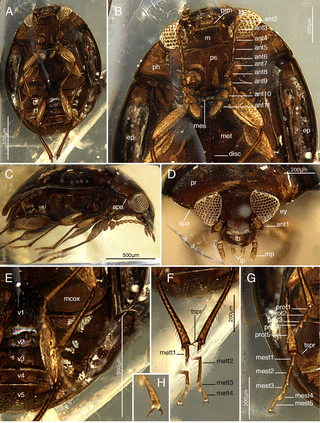| Cryptophagus | |
|---|---|
 | |
| Scientific classification | |
| Kingdom: | Animalia |
| Phylum: | Arthropoda |
| Class: | Insecta |
| Order: | Coleoptera |
| Infraorder: | Cucujiformia |
| Family: | Cryptophagidae |
| Tribe: | Cryptophagini |
| Genus: | Cryptophagus Herbst, 1863 |
| Species | |
see text | |
Cryptophagus is a genus of beetles in the family Cryptophagidae, the silken fungus beetles. It is distributed across all the biogeographic realms of the world. [1] Like most of the other beetles in the family, [1] these are fungivores, feeding on fungal spores and hyphae. [2]
These beetles are flattened and oval in shape, and are generally 2 to 3 millimeters long. They are reddish to dark brown, sometimes with yellowish patterns on the elytra. The thorax is often sculptured with teeth, angles, or other projections. Some are hairy. The larva is usually yellow-brown and cylindrical but flattened, with visible legs. [2]
Some species are considered pests when they inhabit stores of grain, flour, bread, dried fruit, and other products, however, the beetles feed on fungi growing on the food product rather than the product itself. They also breed in the fungi, laying eggs in the hyphae. They are more common in products that are damp and moldy. The beetles can transmit fungal spores to products, encouraging mold growth. In Canada the beetles are common in the grain-producing prairie regions. [2]
These beetles can be found in other habitats where fungi are available, such as beehives, the nests of other hymenopterans such as wasps and ants, rodent nests, and wool. [3]
Species include: [4]


- Cryptophagus acutangulus – acute-angled fungus beetle
- Cryptophagus bidentatus
- Cryptophagus cellaris – cellar fungus beetle
- Cryptophagus confertus
- Cryptophagus corticinus
- Cryptophagus croceus
- Cryptophagus dentatus
- Cryptophagus difficilis
- Cryptophagus discedens
- Cryptophagus distinguendus
- Cryptophagus fallax
- Cryptophagus fumidulus
- Cryptophagus hebes
- Cryptophagus hexagonalis
- Cryptophagus histricus
- Cryptophagus jakowlewi
- Cryptophagus lapponicus
- Cryptophagus latens
- Cryptophagus laticollis
- Cryptophagus lecontei
- Cryptophagus lycoperdi
- Cryptophagus mainensis
- Cryptophagus maximus
- Cryptophagus nobilis
- Cryptophagus obsoletus
- Cryptophagus peregrinus
- Cryptophagus pilosus
- Cryptophagus plenus
- Cryptophagus politus
- Cryptophagus porrectus
- Cryptophagus quadrihamatus
- Cryptophagus saginatus
- Cryptophagus scanicus
- Cryptophagus scutellatus
- Cryptophagus setulosus
- Cryptophagus stromus
- Cryptophagus subfumatus
- Cryptophagus tuberculosus
- Cryptophagus valens
- Cryptophagus varus – sigmoid fungus beetle
- Cryptophagus vestigialis
Some fossil species have been discovered in amber and as compression fossils in rock: [1]
- Cryptophagus alexagrestis
- Cryptophagus bassleri
- Cryptophagus harenus [3]
- Cryptophagus petricola
- Cryptophagus suncholensis










